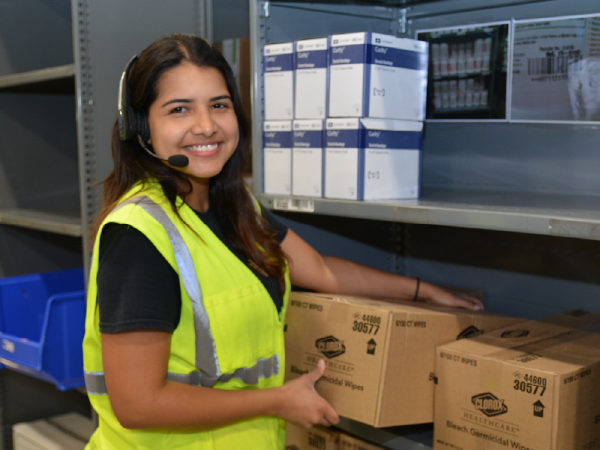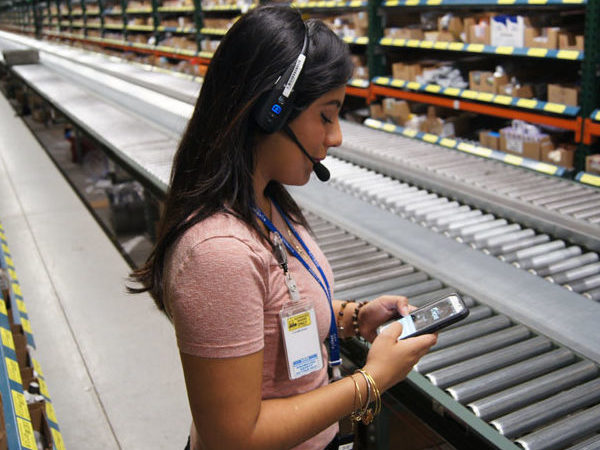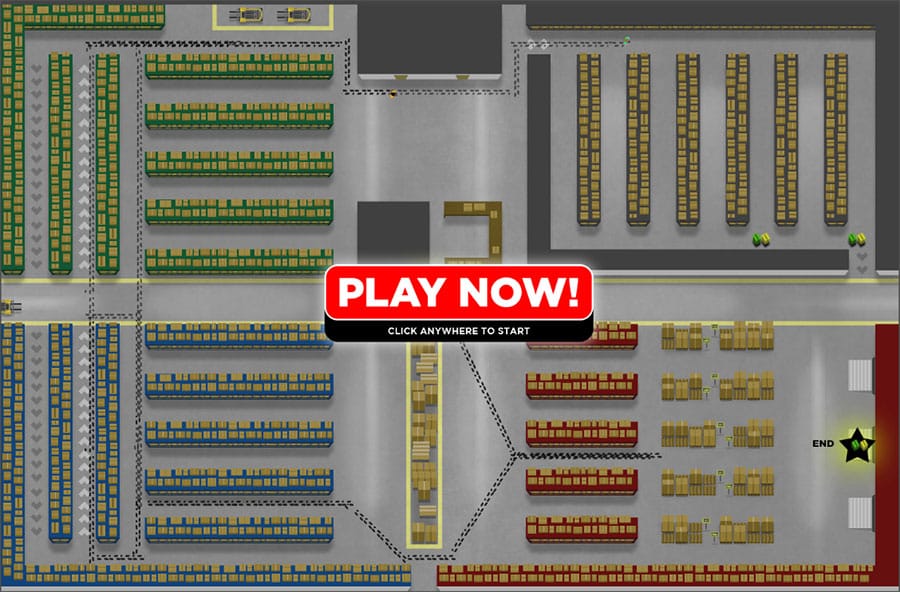Warehouse Travel Optimization
Reduce travel 30-70% with AI-based batch and pick path optimization
Labor is the single largest operating cost in most DCs, and travel often accounts for half of all labor time, especially in order picking. Utilizing an exclusive AI-based process called Dynamic Work Optimization, Lucas helps you reduce travel 30-70% by optimizing assignments of work and by defining optimal pick sequences or pick paths.
Dynamic Work Optimization has allowed customers to more than double picking productivity and cut labor hours in half without making any changes to their warehouse layout or adding expensive automation or robotics.
How Does Travel & Pick Path Optimization Work?
Lucas uses order, inventory, and location information from WMS and other systems and Jennifer™ – the brain, voice and orchestration engine of the Lucas system – applies real-time optimization algorithms and warehouse picking strategies to create optimal work assignments. Jennifer™ then uses a virtual model of your facility to define an optimal pick sequence or travel path.
Maximize pick density with dynamic prioritization
Jennifer™ prioritizes all available work assignments based on rules that you can configure and adjust throughout the day or week. Rules can be based on ship dates, routes, carriers, order types and more. Watch the reducing travel in food service webinar →
Skyrocket productivity with intelligent batch picking
Rather than following a simple first-in-first-out batching method, Jennifer™ uses mathematical models to create optimized batches of pick lines and assigns them to pickers on-demand, as they request work. In contrast to typical WMS batching rules, the Lucas models weigh a variety of factors, including:
1) Order priority
2) Product locations
3) Product dimensions
4) Starting and ending points
5) Potential travel path
6) User permissions
Read more about intelligent batching →
Cut travel in half with pick path optimization
After batches are created, Lucas applies multiple algorithms to determine an optimized path for the user to take through the warehouse to complete their work. The algorithms consider aisle directions (one-way aisles, for example), base item designations, and other factors to determine the most efficient pick path.
Optimize robots and humans simultaneously
While Jennifer™ orchestrates and optimizes within picking zones, a DC can add robots for conveyance between pick zones or other staging locations. This can further reduce worker travel to and from fixed drop off or induction points. Likewise, Jennifer™ can be used to optimize the travel of robots for full pallet moves, both in inbound and outbound operations.
Minimize turnaround times with waveless order release
As an added bonus for DCs processing higher volumes of ecommerce orders, the solution supports continuous order streaming or so-called waveless order release.
Free Travel Optimization Demo
Lucas DWO reduces travel by 30-70 percent in batch or cluster-picking operations. In combination with the complete Lucas warehouse optimization solution, several customers have seen greater than 100% improvements in productivity and 50 percent or more significant reductions in picking hours per shift.
This 8-minute on-demand demo will describe our unique approach to reducing travel and explain the process that enables dramatic picking productivity increases.
Get Started With These Helpful Resources

Southwire Optimizes Ecom and B2B Distribution Using Lucas AI and Voice
Southwire fulfills retail and direct-to-consumer orders (DTC) for extension cords and other consumer products from the same facilities that distribute reels of wire and cable weighing thousands of pounds.

Reducing travel in foodservice distribution webinar
In most foodservice DCs, travel accounts for up to 70% of total order selection time. A big reason for this is that most DCs are creating units of work – two or three pallet assignments – using simplistic batching rules and sequence-based routing that takes selectors on sub-optimal travel paths.

Warehouse Travel Reduction Guide
This guide looks in depth at how different approaches to implementing voice determine the magnitude of productivity gains any facility may achieve. Use the guidelines in this paper to estimate the potential results in your DC.

We helped Baptist Health, a leading healthcare provider, double picking productivity.
“The previous average picking rate in the LUM area was 50-56 lines per hour (LPH). Today it is 100-110. That is a 100% improvement, and in bulk picking, the number is about 20 percent.”

We helped Apex Tool Group, a leading manufacturer of hand and power tools, operate with 10% fewer man hours.
“You rarely implement a new system and have users tell you ‘It’s made my life so much easier!’ Making the processes better for associates makes them more productive. And that’s better for the business.”



